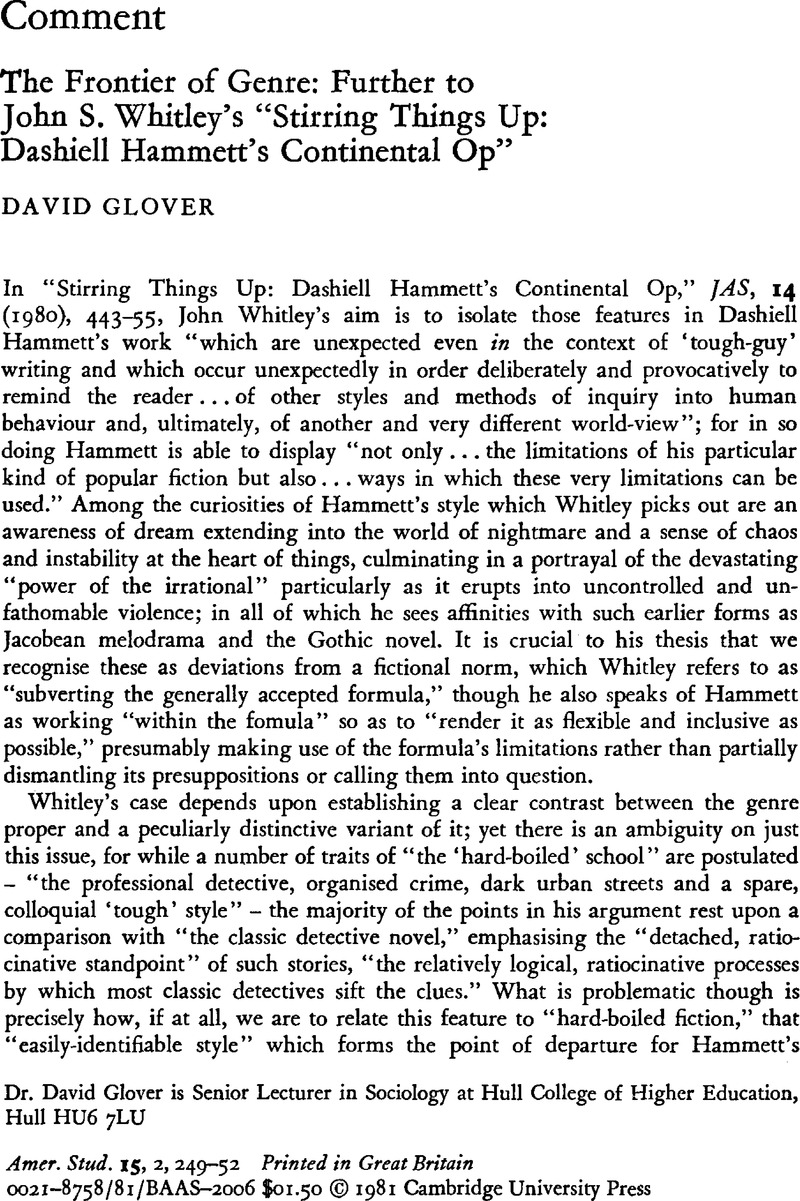No CrossRef data available.
Published online by Cambridge University Press: 16 January 2009

1 Bennett, Donna, “The Detective Story: Towards a Definition of Genre,” PTL: A Journal for Descriptive Poetics and Theory of Literature, 4 (1979), 233–66Google Scholar.
2 Hammett, Dashiell, The Dain Curse (London: Pan Books, 1975), p. 93Google Scholar.
3 The contrast with The Maltese Falcon is very marked. See Durham, Philip, “The Black Mask School,” in Madden, David (ed.), Tough-Guy Writers of the Thirties (Carbondale: Southern Illinois University Press, 1968), pp. 51–79Google Scholar.
4 Palmer, Jerry, Thrillers: Genesis and Structure of a Popular Genre (London: Edward Arnold, 1978, £9.95 cloth £4.75 paper), pp. 85–86, 93–106, 148Google Scholar.
5 See Palmer's discussion of The Hound of the Baskervilles, ibid., pp. 122–28. Donna Bennett makes the similar point that “a number of mysteries are built on an awareness of both their community with the horror genre and their ultimate distinctness.” Bennett, p. 261. Gothic elements can be found in writers as diverse as Ngaio Marsh, Edgar Wallace and Sax Rohmer.
6 Borges, Jorge Luis, An Introduction to American Literature (New York: Schocken Books, 1973), p. 82Google Scholar.
7 Palmer, p. 52.
8 The Dain Curse, p. 100.
9 Hammett, Dashiell, “This King Business,” in The Big Knockover and Other Stories (Harmondsworth: Penguin Books, 1969), p. 133Google Scholar.
10 Orwell, George, “Raffles and Miss Blandish,” in Decline of the English Murder and Other Essays (Harmondsworth: Penguin Books, 1968), p. 73Google Scholar.
11 The Dain Curse, p. 113.
12 Palmer, p. 52.
13 Buchan, John, The Thirty Nine Steps (London: Pan Books, 1978), PrefaceGoogle Scholar.